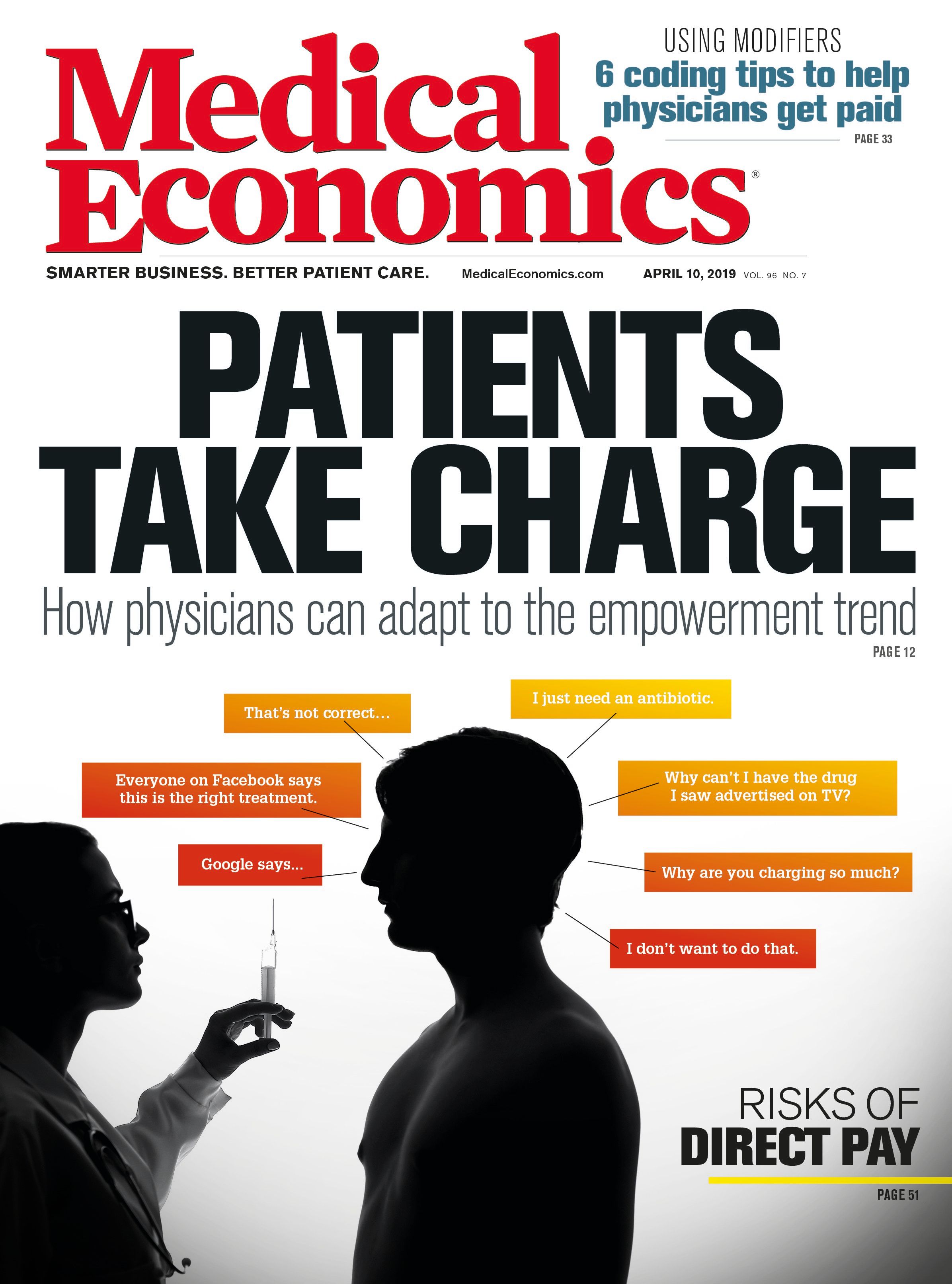Publication
Article
Medical Economics Journal
Ease patients' financial pain points through billing transparency
Author(s):
If physicians address these three pain points in a way that puts patients' needs first, they should be able to create the type of experiences patients will enjoy and tell the world about.
©Sherry Yates Young/Shutterstock.com

In 2017, Black Book’s "Revenue Cycle Management" report revealed that the average patient was expected to pay more than $6,200 a year for insurance deductibles and other out-of-pocket costs. That’s almost 30 percent higher than average consumer healthcare costs in 2015. It’s also a harbinger of the shift toward consumerism that the healthcare industry needs to embrace.
The report also noted that 82 percent of providers and 92 percent of hospitals struggled with traditional collection methods. Millions of dollars in unreconciled medical bills were left on the table. Rather than spending millions more paying third-party agencies to chase those payments, providers are closing the gap by changing their methods to cater to consumers.
That means more than providing excellent healthcare and service - it also means making everything, including admissions, billing, and coding, more transparent and convenient. When patients understand their out-of-pocket costs and the bills they receive are exactly what they expected, they’re more likely to pay them consistently and on time.
They’re also more likely to share their positive experiences online, which is the surest way for organizations to stand out from competitors. About 80 percent of internet users in a study by Pew Research Center's Internet and American Life Project said they search for health information online. Among that group, 21 percent said they looked up reviews about particular doctors and hospitals before making a choice.
Appealing to consumers has traditionally been more of a retail strategy. Stores need consumers to choose them. In healthcare, patients' choices have been restricted by limitations in their insurance, Medicare, or Medicaid coverage, which means organizations have had a largely predetermined supply of patients.
As more costs for care and treatment shift to patients, they're becoming more discerning about where they go to receive care. That is new territory for healthcare providers, which aren't used to having to compete for business by appealing to savvy consumers.
Without the experience of retail marketing, hospitals and providers have found it difficult to attract and keep patients within the new healthcare economy. In an Experian Health consumer study, researchers found that the most significant pain points for patients lie in the financial aspects of their care.
To create the type of experiences your patients will enjoy and tell the world about, you'll need to address these pain points in a way that puts their needs first. Here are three pain points healthcare providers should address:
1. Patients receive inaccurate estimates about the cost of care. Healthcare billing is complicated by nature, especially as insurance policies, medical suppliers, and partnering organizations constantly evolve. It’s easier for hospitals to speculate what a patient might have to pay than to break down exactly what will factor into those costs. But it’s extremely frustrating for patients to receive bills much higher than they expected.
The discrepancy between the bill and the expectation leads to sinking customer satisfaction and more unpaid bills. Healthcare providers need to set more accurate expectations by taking the time to provide transparent price estimates, including how much the patient's insurance company will cover and how much the patient will pay.
2. Patients are unable to compare prices among providers. As organizations make pricing easier to understand, patients will use this information to compare the treatment prices of local hospitals and providers. Organizations will need to keep their consumer-centric focus to stay relevant. If you ignore transparency or if the costs you project are difficult to understand, you could be left out of the comparison altogether.
Instead, make those comparisons a part of the conversation. If a trusted clinic offers MRIs for thousands of dollars less, work with the patient to ensure the imaging is high-quality enough instead of shunning the idea. Focusing on patients as consumers means taking every aspect of their well-being into account, including what’s financially best for them.
3. Patients are not allowed to make payment choices. Having the freedom to choose and the information necessary to do so wisely notably enhances patient satisfaction. It also makes it easier for patients to understand their bills from the very beginning, which is critical in appealing to their needs as consumers. No matter how high-quality their care was, patients still report negative experiences if they’re frustrated about their bills.
Being transparent helps clarify the bill, and patient-facing technologies, such as online patient portals, make it more convenient for them to pay. There’s no confusion about where to send the payments, and billing through a portal can be consolidated into a single payment or payment plan that patients can access almost anywhere.
Online portals can also incorporate credit data into the patient billing process. Credit data offers insight into each patient’s propensity to pay and financial disposition. This information allows organizations to identify the best financial pathway (payment plans, assistance, deposits, etc.) for the patient at the time of service - or even before.
Patient self-service products anticipate how to best help each patient by creating a proactive and compassionate mobile-first experience that empowers people to apply for financial assistance, activate payment plans, review insurance benefits, and estimate the cost of care.
Now that consumers are paying more for their healthcare out of their own pockets, they’re not willing to accept pain points from healthcare providers. Stand apart by being exactly what patients expect: an organization that caters to them as though their business matters.
Paul Hoffman, vice president of product development at Experian Health, is responsible for creating and designing patient portal solutions. He pioneered the patient-friendly billing movement in 1991 at RUSH University Medical Center in Chicago, and his efforts led to the launch of a human-centered approach to patient communications at premier health systems like Cedars-Sinai, Stanford Medical Center, and Northwestern Memorial Hospital. In 2001, Paul developed the industry’s first self-service online business office for patients, which is used by more than 500 U.S. hospitals. Paul is a passionate visionary devoted to developing technology to improve the patient experience.






